Clitocybe geotropa: Champignon argenté
2 years ago · Updated 6 months ago
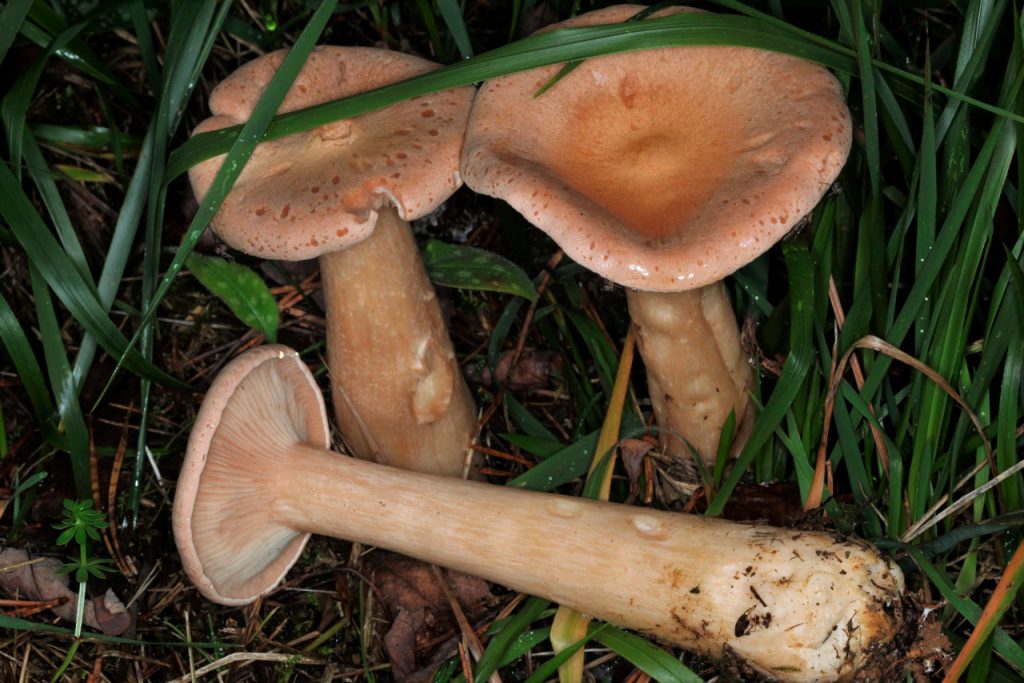
Clitocybe geotropa, commonly known as the geotropic mushroom, is a real gem of our forests. Its funnel-shaped cap, almond aroma, and mild flavor make it one of the most prized species among mushroom pickers and nature lovers.
Although it goes by different names depending on the region, its beauty and uniqueness make it unmistakable to those who know how to look. When entering the forest, whether in search of edible mushrooms or simply to enjoy the environment, the presence of Clitocybe geotropa is always a special discovery.
Beyond its culinary value, this mushroom is a symbol of the mycological richness of our ecosystems. Admiring and respecting it is part of a commitment to conservation and conscious enjoyment of the natural world.
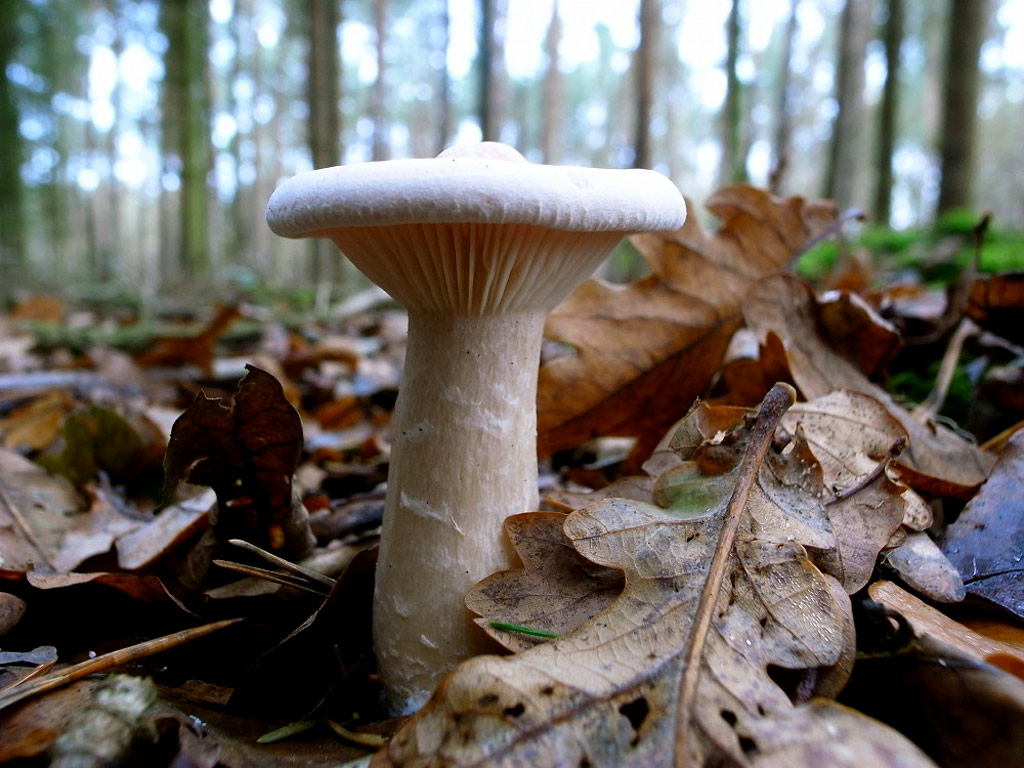
Popular names for the monk's mushroom
Clitocybe geotropa, commonly known as monk's mushroom, has a wide variety of names in different Spanish-speaking regions. This diversity reflects both its wide geographical distribution and its deep roots in the popular and gastronomic culture of many rural areas.
Some of the most common names include:
Cabeza de Fraile, Urril Ziza, San Martín Ziza, Candela de Bruc, Pampa, Fongo Platera, Blanquilla, Candela, Capellán, Caperán, Franciscano, Fungu funil, Funiellu, La seta, Mojardón, Montera, Montesina, Mucerón, Muserón de otoño, Seta blanca, Seta cucharera, Seta de brezo, Seta de caña, Seta de cañada, Seta de carrasca, Seta de encina, Seta de matacán, Seta montesina, Seta vera, Seta vizcaína, Tête de moine.
This wealth of popular names not only reflects its mycological importance, but also the cultural and emotional connection that many communities have with this iconic autumn mushroom.
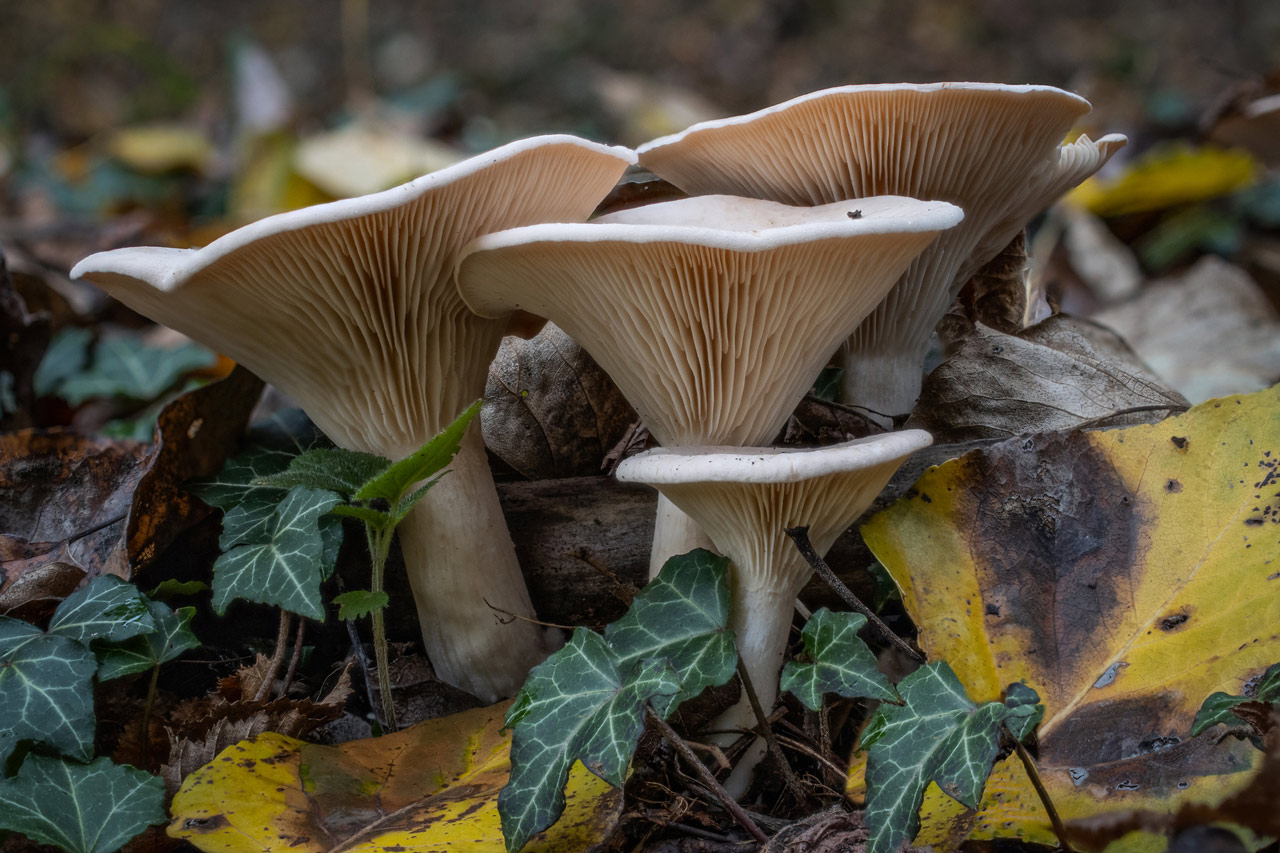
Characteristics of the silver mushroom, Clitocybe geotropa
Now let's take a closer look at the characteristics that make Clitocybe geotropa so special:
- Cap: The silver mushroom is a large species with a funnel shape. Its cap can reach considerable sizes, up to 25 cm in diameter. Initially, it is depressed in shape and has a nipple in the center. As it grows, the cap becomes flat and hollow in the center, while retaining the nipple. Its color is uniform beige, although it tends to be more whitish when young. The cap is fleshy and has a regular edge. Its size can vary from 8 to 20 cm.
- The cap and stem of Clitocybe geotropa are brownish-ochre in color, although the cap may have silvery reflections on its surface. In its juvenile stage, this mushroom is nicknamed “monk's head” because of its distinctive shape.
- Gills: This mushroom has gills that run down the stem, are whitish or pale ochre, and are the same color as the cap. They are numerous and extend from the edge of the cap downwards.
- Stem: The stem of Clitocybe geotropa is slightly clavate, central in relation to the cap, and similar in color to the cap or slightly lighter. It is tall, solid, robust, fibrous, massive, and spongy.
At the base of the stem, it is usually lighter in color than the cap. - Flesh and smell: The flesh of this mushroom is quite whitish, tough, and consistent. However, the stem is excessively fibrous, making it unsuitable for consumption.
Clitocybe geotropa has a characteristic odor, similar to that of almonds. In addition, its flavor is mild and appreciated by mycology enthusiasts.
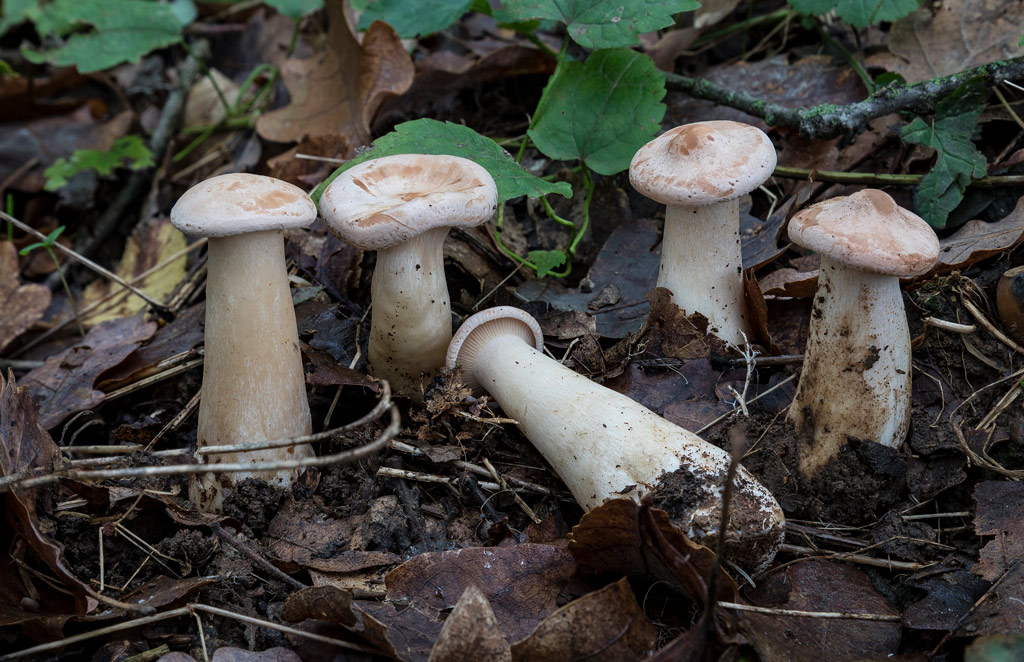
Habitat and season of the Clitocybe geotropa mushroom
Clitocybe geotropa, or giant funnel mushroom, is a mycological species that has a particular affinity for certain habitats and has a well-defined growing season. Below, we will explore where we can find this mushroom and when it usually appears.
Where does Clitocybe geotropa grow?
This mushroom likes light and usually grows in open areas such as meadows, grasslands, and heaths. However, it can also be found under the cover of trees in open areas such as beech and oak forests. Even pine forests can be home to this mushroom, provided that the light penetrates with sufficient intensity. Clitocybe geotropa seems to show a preference for areas where livestock regularly pass through, and is usually found in calcareous soils, although it is not exclusive to these.
In addition, this mushroom is versatile in its ability to grow in different conditions. It can thrive in setales and large fairy rings, and sometimes appears in impressive quantities. Even in mountain environments, it can appear at altitudes of 700 meters and above. It is known for its ability to sprout in extremely stony soils, sometimes lifting small slabs of stone to emerge.
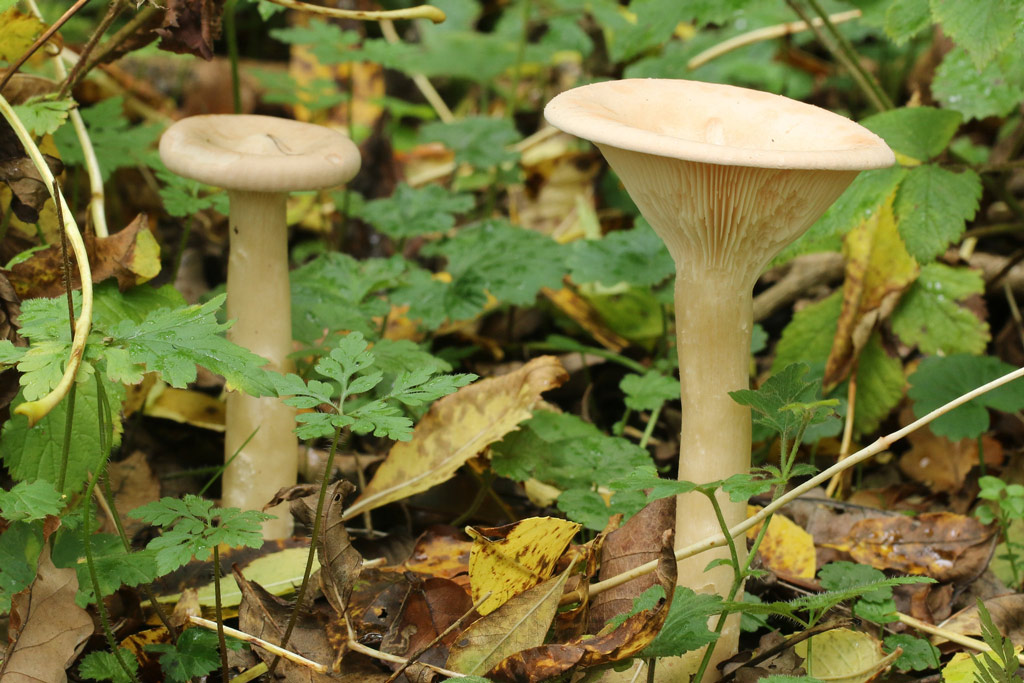
When is the season for the platera mushroom?
Clitocybe geotropa has a well-defined growing season, which varies depending on local conditions. In general, this mushroom is more common and abundant in autumn and winter. In more humid areas, it usually begins to grow with the first autumn rains, making it a welcome sign of the arrival of the mushroom season. On the other hand, on warmer, thermophilic slopes, specimens can be found in early winter.
Clitocybe geotropa is known for its ability to form large fairy rings in grassy pastures and meadows under holm oaks and downy oaks. In some areas, the sight of these massive plantations can be astonishing, and mushroom pickers can collect considerable quantities of this delicious mushroom, sometimes exceeding 30 kilos in a single location.
Curiosities about Clitocybe geotropa, the silver mushroom
Clitocybe geotropa, or silver mushroom, is a species of mushroom that has some interesting curiosities:
- Impressive production: The setae of Clitocybe geotropa have the ability to produce astonishing quantities of mushrooms. In some cases, it has been recorded that a single seta can produce between 20 and 40 kilograms of plateras. This makes it an important food source for those who enjoy mushroom picking.
- Natural hiding place: These mushrooms can sometimes go unnoticed due to their ability to grow hidden under dense vegetation, especially under heather. This can make them difficult to locate, but once the location of a setal is known, they can be harvested repeatedly. Clitocybe geotropa is known for its consistency and pleasant aroma, making it a treasure for mushroom pickers.
- Two different types: Pickers generally distinguish between two different types of Clitocybe geotropa.
One of them has a more reddish color and is found in wooded areas or mountain pastures. This variety tends to have a softer consistency and a more pleasant taste. The other type grows in valley meadows and has a browner hue, a harder consistency, and a less flavorful taste.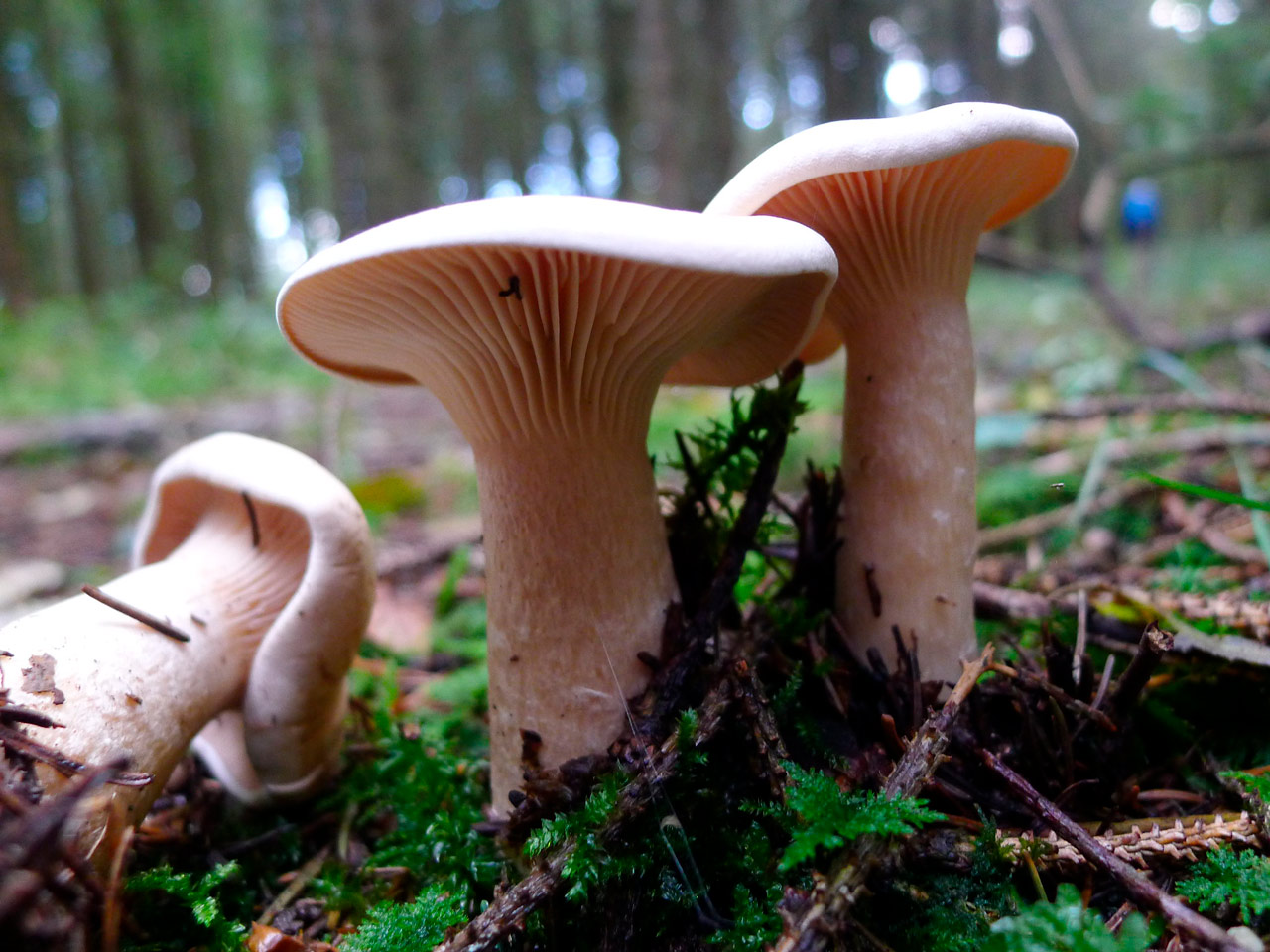
Confusion between Clitocybe geotropa and other mushrooms
Although Clitocybe geotropa is relatively easy to identify due to its characteristic size and color, there are a few species that can cause confusion:
- Clitocybe maxima: Although it was once considered a separate species, it is actually an adult and stocky form of the same Clitocybe geotropa.
- Leucopaxillus candidus: Although whiter than the flat variety, it is edible and confusion between the two poses no danger.
- Clitocybe gibba or Paralepista flaccida: These species are also similar in some respects, but are smaller than Clitocybe geotropa.
Edibility of funnel mushrooms
Clitocybe geotropa is an edible mushroom, especially when young specimens are harvested. Once the stem has been discarded, funnel mushrooms are a delicacy with a pleasant flavor, ideal for accompanying stews and other dishes.
On some occasions, it is dried and ground into powder for use as a seasoning. However, it is important to note that older specimens are not suitable for consumption, as their flesh becomes tough.
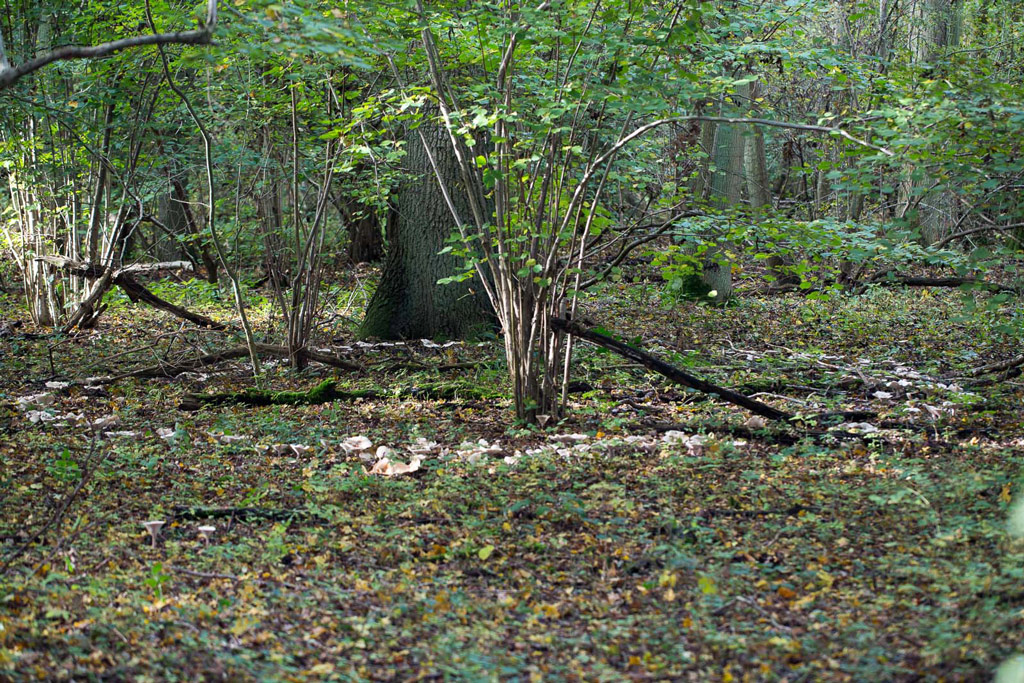
Keys to Recognizing Geotropic Clitocybes (Clitocybe geotropa)
Recognizing Clitocybe geotropa, or geotropic clitocybe, is essential for mycology enthusiasts. Here are some keys that will help you identify this mushroom with confidence:
- Imposing size: One of the most distinctive features of Clitocybe geotropa is its considerable size when fully developed. Some specimens can reach diameters similar to those of a small soccer ball. Compared to other mushrooms of similar appearance, such as those of the Clitocybe family, which are generally much smaller and whiter, the Clitocybe geotrope stands out for its large size and characteristic color.
- Witch's ring formation: Clitocybe geotropica tend to form witch's rings where they thrive. This feature is particularly useful for identification when found in large numbers. These witch's rings are usually found under holm oaks, cork oaks, and in meadows. The sight of a group of geotropic clitocybes in a forest clearing is impressive due to their size and distinctive shape.
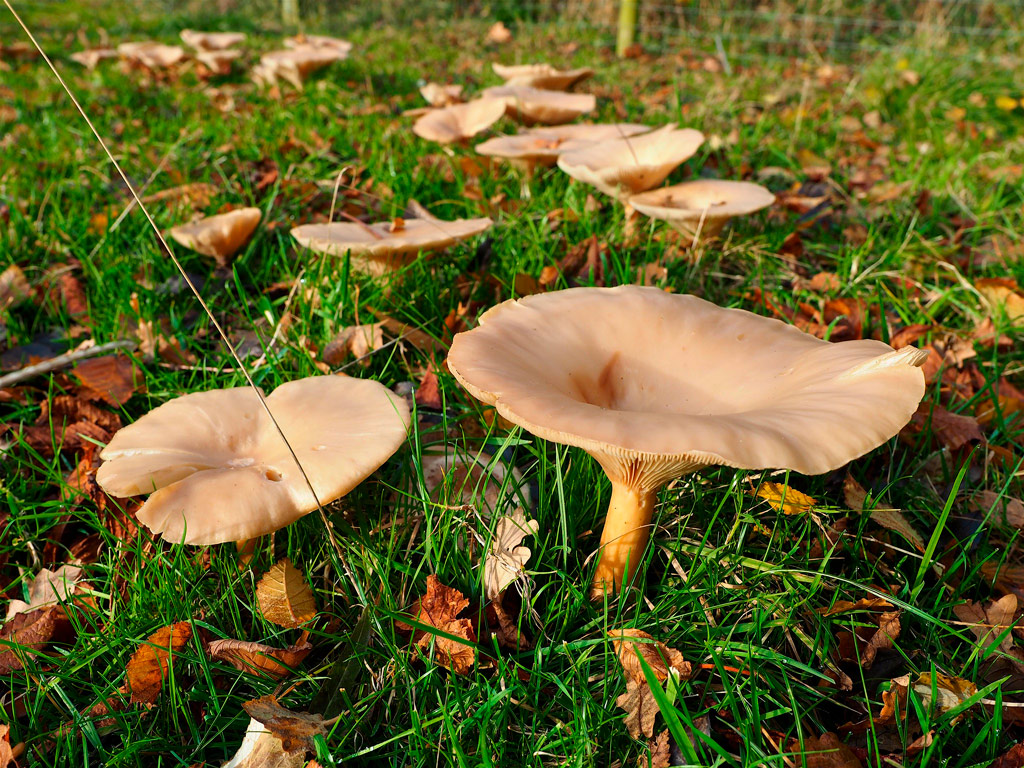
- Absence of latex: A key characteristic of Clitocybe geotropica is that it does not produce latex or “milk” under its gills. This distinguishes it from many other mushrooms, such as milk caps, which have the distinctive feature of releasing this substance. The gills of the Clitocybe geotropum are directly attached to the stem, which is another distinctive feature for its identification, particularly in relation to certain Tricholoma and Melanoleuca species of similar size that also appear in winter.
- Curled margin and geotropism: The edge of the cap of the geotropic clitocybe is curled, especially in young specimens. Over time, the cap opens, but it always ends up pointing towards the ground. The name “geotropa” of this mushroom is due precisely to this characteristic, as “geo” means “earth” and ‘trope’ refers to “oriented.” This geotropic behavior is distinctive of Clitocybe geotropa.
- Differentiation from Clitocybe gibba: To avoid confusion with other species, such as Clitocybe gibba, we can observe the more brownish color of geotropic clitocybes and their slightly more cracked silhouette. Although Clitocybe gibba is slightly smaller than Clitocybe geotropa, both grow in the same places and are mushrooms that appear in winter. Fortunately, both Clitocybe geotropa and Clitocybe gibba are edible, making accurate identification even more important for mushroom pickers.
- These keys will help you recognize Clitocybe geotropa with more confidence on your next mycological expedition, allowing you to enjoy its delicious flavor and avoid confusion with other species.li>
See you soon in the mountains!

Te pueden interesar